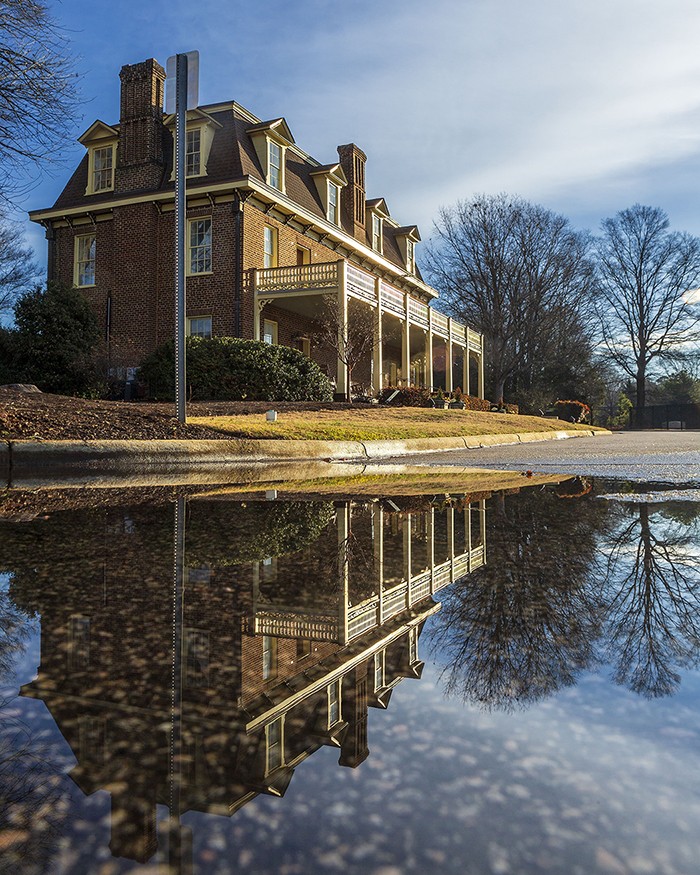
Added to the National Register of Historic Places in 1979, the Page-Walker Hotel was dilapidated and neglected by 1985. Keen to renovate and save the building, the Friends of the Page-Walker persuaded the Town of Cary to buy the property. In 1994, renovations were complete and the structure is now known as the Page-Walker Arts & History Center.
This month, the Town of Cary marks the 150th anniversary of its incorporation on April 3, 1871. It’s an opportunity to remember the community’s past and to anticipate what is to come. It’s also an excuse to have some fun.
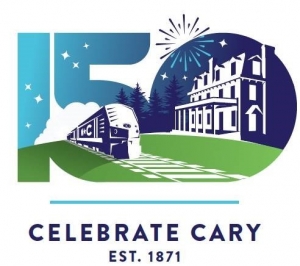
On Saturday, April 3, the Town will celebrate the anniversary of Cary’s incorporation with a video showcasing the past, present, and future of Cary, followed by a commemorative concert by Chatham Rabbits and Hiss Golden Messenger and a special closing message from Mayor Harold Weinbrecht Jr.
The video will be available live on Cary’s Facebook page and YouTube channel, starting at 8 p.m.
“It is an honor to be Mayor of Cary as we commemorate our 150th anniversary,” said Mayor Harold Weinbrecht. “This year is a tremendous opportunity to recognize Cary as the best place to live, work, and play through the lens of honoring the past, celebrating our present, and looking forward to the future.”
Plans for Cary’s Sesquicentennial have been in the works for nearly two years, but because of the COVID-19 pandemic, many events had to be reimagined or delayed.
Sarah Martin, who chairs the Cary150 task force, says a primary goal is to encourage as many people as possible to participate.
“One of the things that can be somewhat mind-boggling is how you engage the entire town. How do you engage everyone in Cary to want to know more, or to want to get involved? So that’s why the gobs of activities,” she said.
Some of those activities are large, town-wide events like the Day to Remember street festival planned for July or the crowdsourced play, “The Story of Cary,” which will be staged this fall. Others are for individuals or families, like the Virtual Scrapbook or the driving tours of Cary’s historic places.
Carla Michaels, a member of the Friends of the Page-Walker Hotel, grew up in Cary and was in high school when the town celebrated its Centennial in 1971. Because the town was so much smaller then, Michaels says it seemed like everyone she knew was involved in it.
“Cary was largely residential and agricultural for many, many years, and that is changing. And I think when people come here, they see all that development, but they don’t realize how much history there is.”
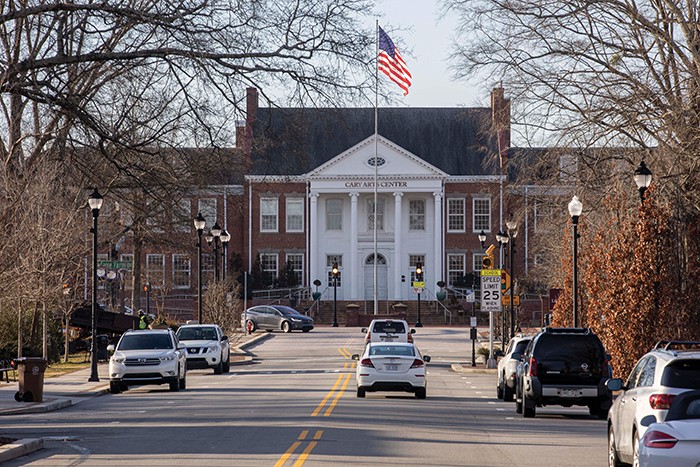
The Cary Arts Center was originally built as Cary High School in 1939. It stands on the site of Cary’s first high school, established as Cary Academy by Frank Page and local community leaders in 1871.
Michaels says knowing the history of the town can help new residents understand themes that continue to shape Cary and the decisions of its leaders.
One such theme is the balance between economic growth and quality of life. After Research Triangle Park was founded in 1959, the population of Cary doubled in a few years. e town continued to grow, and in the 1970s, planning regulations required builders to set aside more green space.
“The leadership has said these things are important. Quality of life is important. Green spaces are important. A good economy is important. Infrastructure is important, even the sign ordinance that people hate until they go elsewhere, and then come back to town and think, ‘Oh, it looks so good here,’” Michaels said.
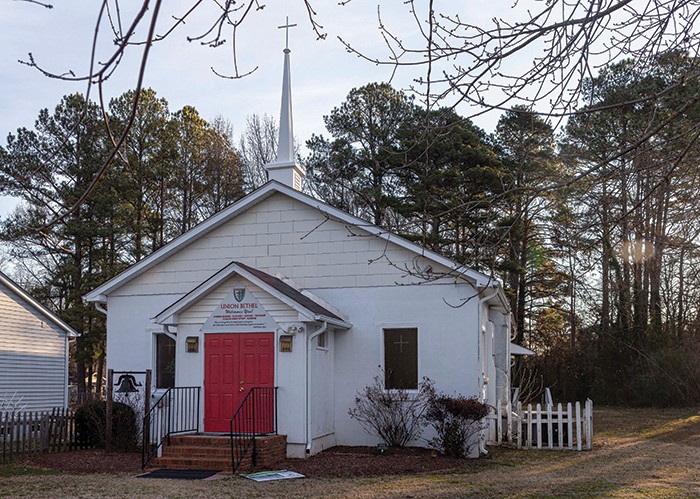
The Union Bethel African Methodist Episcopal Church was established in 1898 by Addison and Mintie Blake. Members of the Blake family have been living in Cary for more than 100 years, and the church was known at one time as “the Blake church.” It remains active today.
“Those small things have all added up to a great quality of life here, and I really value that.”
Martin, a self-proclaimed Cary cheerleader, agrees that learning the history of a place is important to feeling connected to it. But coming together for big community events like the Cary Sesquicentennial helps residents also feel connected to each other.
“We’re in such a unique place. The growth in this community, over the years, forces us in some ways to reach out and make connections with each other,” said Martin, who has lived in Cary for nearly 30 years.
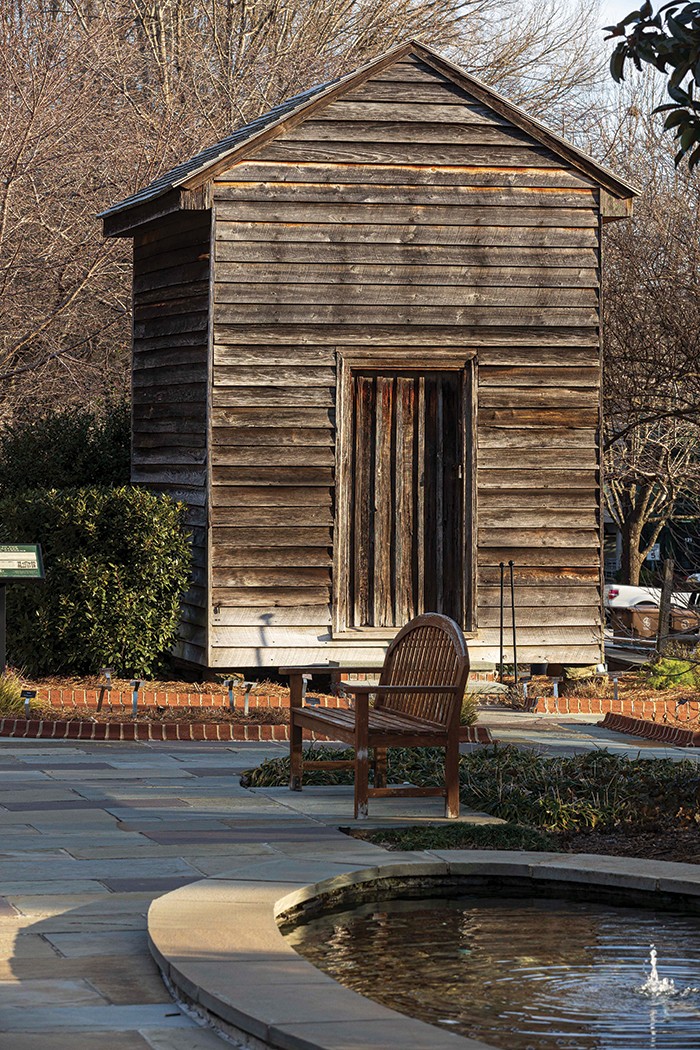
The smokehouse on the grounds of the Page-Walker Arts & History Center is the only remnant of Frank Page’s home place, originally located at the site of the present Town Hall.
“Once folks get here, they are looking to reach out and meet their neighbors and figure out what Cary is about. And (events) like this give us an opportunity to do that.”
Cary’s History Highlights
Cary began as a settlement in 1750 and prospered because of its location at a crossroads. Inns like Bradford’s Ordinary, built in 1794, and the Nancy Jones House, built in 1803, served travelers heading to Chapel Hill or Raleigh. However, it was the expansion of the North Carolina Railroad in 1854 and the Chatham Railroad in 1868 that accelerated the town’s development.
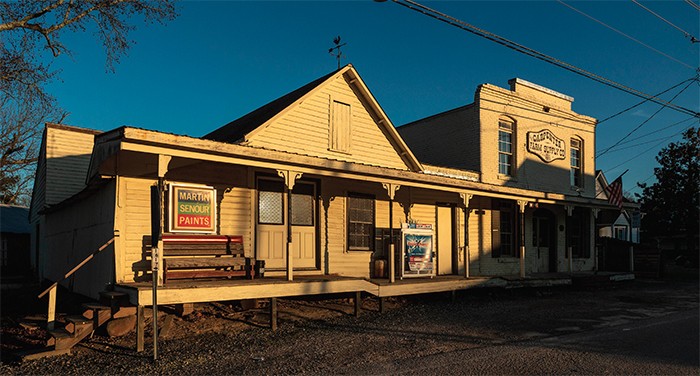
The Carpenter Farm Supply Company was established in 1885, conveniently located near the railroad tracks. In 2000, the Carpenter Historic District was entered into the National Register of Historic Places by the National Park Service.
Frank Page and his wife bought 300 acres of land on either side of the railroad tracks in 1854. He started a lumber mill, opened a dry goods store and established the town’s first school, Cary Academy. In 1868, he built a hotel to serve railroad passengers.
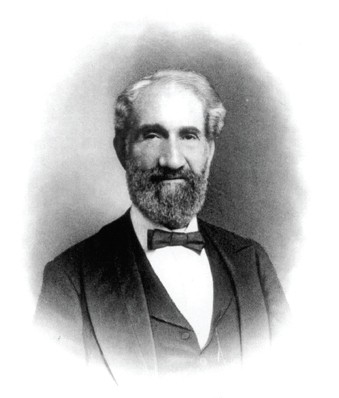
Frank Page
When it came time to incorporate the town in 1871, instead of naming the village for himself, Page chose to honor one of his heroes. A staunch teetotaler, Page was a great admirer of temperance leader Samuel Fenton Cary, who was also a former Congressman and future vice presidential candidate from Ohio. Page named his new town Cary and became its first mayor.
Cary’s reputation for a well developed school system began in 1907 when Cary Academy was purchased by the state of North Carolina and Wake County Board of Education. Renamed Cary High School, it became one of the first public high schools in North Carolina.
Agriculture remained a dominant industry for a few decades more, although the town’s character started to shift in the 1920s. The Western Wake Highway (now Chatham Street) was paved, making the drive to Raleigh faster and easier, and Cary’s suburbs flourished.
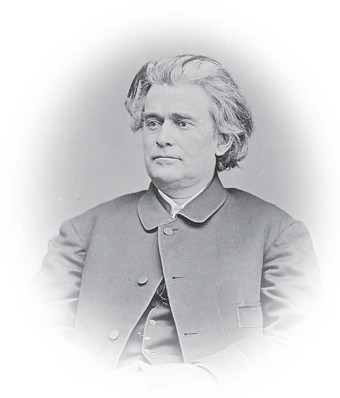
Samuel Fenton Cary
The town’s population continued to grow after World War II, and really took off after 1959, when Research Triangle Park was created. To address overcrowding, several new schools were built in the 1960s. Cary became the first school system in Wake County to integrate its schools in 1963, but the town’s schools were not fully desegregated until 1976.
In the ’70s, concerns about unchecked growth led the town to require builders to set aside more green space. In 1972, the Community Appearance Commission was established.
Today, Cary is the seventh largest municipality in North Carolina, with nearly 175,000 residents. There are more than 30 public parks, 82 miles of trails, and dozens of festivals and events throughout the year. It consistently ranks as one of the best places to live in the U.S.
Sources: Friends of the Page-Walker Hotel, Wikipedia.org, Cary150.org
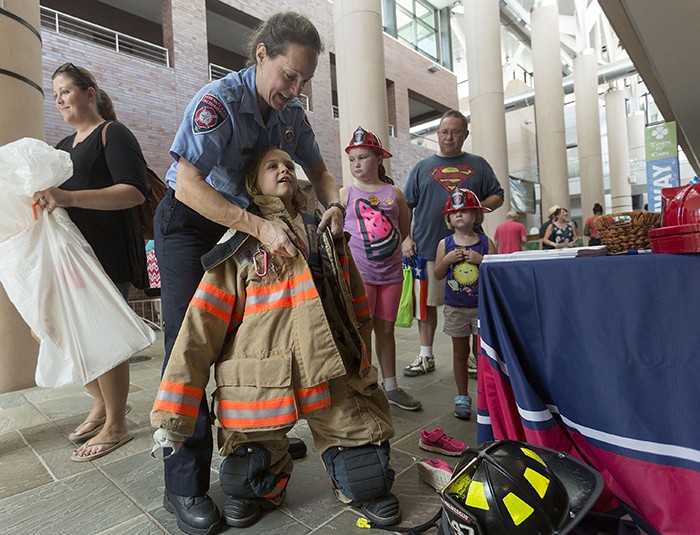
Lazy Daze Fall Festival
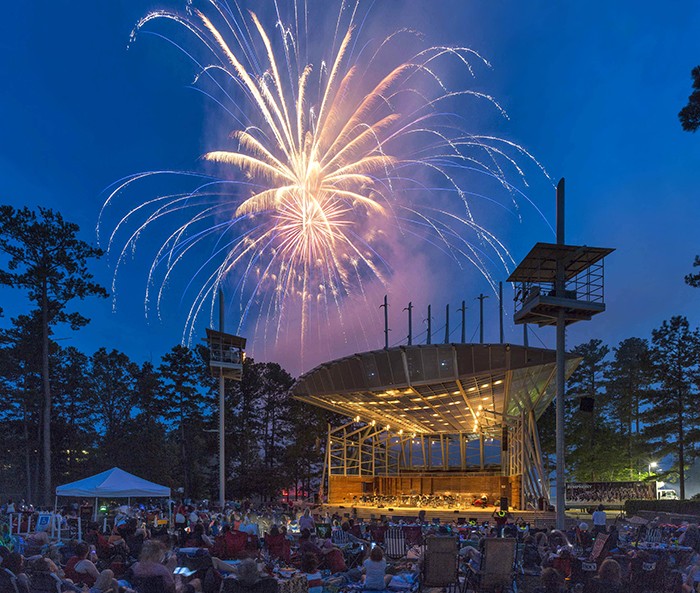
Fourth of July Celebration, Koka Booth Amphitheatre
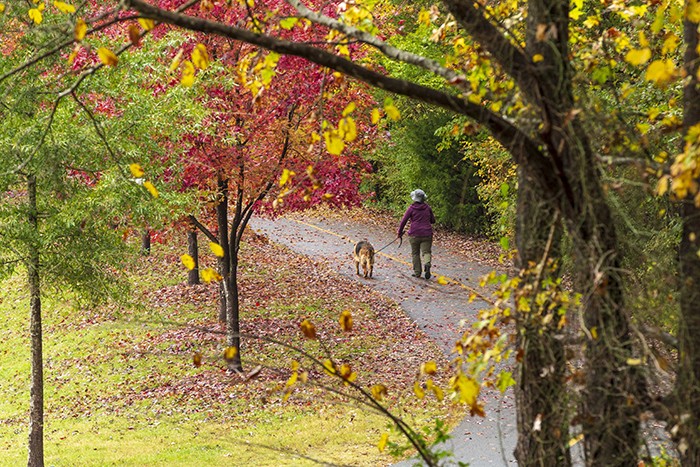
Fred G. Bond Metro Park
Virtual Scrapbook
Celebrate Cary’s 150th anniversary with 150 fellow residents, who have shared their memories of living in Cary. These stories memorialize and celebrate everyone’s part of the town’s larger narrative, and stories are still being collected! Submit your story by visiting cary150.org/share, where a series of questions will jog your memory. Read the stories that have already been submitted at cary150.org/community-scrapbook/.
Walking and driving tours
Discover historically significant locations around Cary through various walking and driving tours, planned by the town. Each tour comes with an informative guide, so go at your own pace and learn something new.
We Are Cary: 150 Years Later (April)
This is a social practice and artist residency led by nationally-known textile and installation artist Jan-Ru Wan. Originally, Wan and her team were to lead community workshops to create art installations. Last year, Wan shifted her plan and instead collected photos of citizens wearing their face masks, which will be displayed at the Cary Art Center.
“The Story of Cary” (September – October)
Playwright Katherine Loflin has gathered local facts, legends and family histories into a play called “The Story of Cary,” which will be staged at the Cary Arts Center. This crowd-sourced project is in collaboration with the Town of Cary, Friends of the Page-Walker Hotel, Cary Players, and Cary Playwrights’ Forum.
Your Tree, Our Tree (Fall 2021)
To encourage the planting of native trees, the town plans to give away saplings to be planted in residents’ yards. Those registering for the program will also receive a 150th commemorative tree marker. Follow Cary It Green on Facebook for details.
Community Celebration A Day to Remember (July 24)
An outdoor festival on Academy Street will celebrate the town’s founding. Planned activities include food vendors, carnival games, and an attempt to set the Guinness World Record for the tallest cupcake tower.
Masquerade 150 Gala (Nov. 13)
A posh celebration is planned for the fall, although final details aren’t set.
Time Capsule
Mementos from 2021 will be saved for future historians, and the capsule will eventually be buried at Cary’s Downtown Park. Look for updates on the Cary 150 website.
For information about activities throughout the year, visit Cary150.org.
- Cary Celebrates 150 Years
- Nonprofit Spotlight: The Flower Shuttle
- Pregnancy is Better, Together
- Walk, Squat, Stand
- Dad Influencer Curtis Webster Jr.
- The Art of Perseverance
- Small Business Spotlight: A to Z Pharmacy
- Garden Adventurer: The Other Peppers
- Liquid Assets: Truth Serum Pale Ale from Tobacco Road Brewing
- Liquid Assets: The NC-21 (No Children Under 21), from The Provincial
- Restaurant Profile: Daybreak






This is a wonderful article that shares the upcoming events regarding our community’s 150th year celebration. I look forward to them!